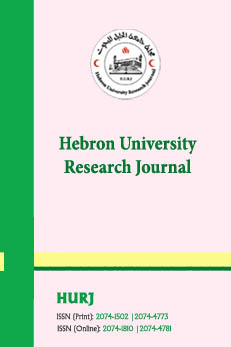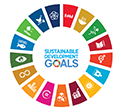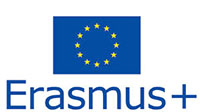Multimedia & Web Technology Department
Course Description
View Course description as PDF file:
T2120 Hand Drawing
This course offers an introduction to the fundamental skills of freehand (academic) drawing, focusing on the observation and rendering of a variety of subjects, including still life, human figure, and landscapes. Students will practice using diverse drawing materials and techniques to develop their ability to accurately depict form, proportion, and perspective. Emphasis will be placed on improving observation skills and understanding light and shadow. Through a combination of guided exercises and independent practice, students will build a solid foundation in drawing techniques while fostering their creative expression
T2150 Principles of Design
This course provides an introduction to the core concepts and techniques of design principles that form the foundation of effective visual composition. Students will explore key graphic design elements, including point, line, shape, color, and texture, along with the psychological and kinetic implications of shapes. The course also covers essential design principles such as unity, rhythm, balance, movement, and dominance, guiding students on how to apply these concepts to create cohesive, functional, and visually captivating designs. Through a combination of theoretical learning and hands-on black and white projects, students will develop a deeper understanding of how these principles work together to influence visual design and effectively communicate messages.
T2154 Color Theory
This course focus on the fundamental principles and applications of color in art, design, and visual communication. Students will explore the use of color across various art movements and schools, as well as key concepts such as the color wheel, color groups, mixing techniques, and color relationships. The course also examines color harmony, contrast, saturation, and brightness, focusing on how these elements influence emotional response and visual impact. Additional topics include the psychological, physiological, and cultural meanings of color, along with its ability to convey messages in different contexts. Through hands-on exercises using different materials, students will develop a comprehensive understanding of color and its effective application in creative work.
T2203 Web Programming (1)
The course aims at introducing the fundamental concepts and languages of the Web - including HTML5, CSS3, and powerful JavaScript libraries. Students will learn the semantics of a web page and how to abstract information in a universal form on the web with HTML5. Students will learn how to make things "pretty" and presentable using CSS3. And finally - interactivity and user-personalization will be added using JavaScript. By the end of the course, students will understand: the fundamental cross-browser issues that inhibit the progress of web technology as we know it, the ideas behind a well-designed interactive website for the Google Chrome and Mozilla Firefox browsers, and the tools needed to continue learning.
T2250 2D Modeling and Design
This course offers a comprehensive exploration of vector graphic design, beginning with the fundamentals of 2D drawing techniques. Students will learn to create and manipulate shapes, refine their designs with precise tools, and effectively apply color. As they advance, they will delve into more complex design concepts, such as blending, text integration, and adding depth through various effects. Students will be equipped to create polished, high-quality 2D artwork suitable for a wide range of applications and outputs.
T2262 Prints Editing and Design
This course offers a thorough introduction to the print production process. Students will begin by mastering fundamental photo editing techniques, including image manipulation and defect correction. They will also gain hands-on experience with key design tools, with a focus on text formatting and effective management of design elements. Students will be prepared to create professional print layouts, such as business cards, product packaging, and magazines
T2326 Open Source Content Management Systems
This course aims to provide the basic overview of the Semantic Web and how they can be applied to enhance data exchange and integration. Students will firstly learn the core fundamentals of XML (Extensible Markup Language) as a standard for data interchange between applications and between organizations, and XML related technologies — including XSL, schemas, XPath, XQuery and DOM. After that, students will learn the basic overview of what the Semantic Web is and how it can be applied, mainly the Semantic Web language, RDF graph database (i.e., RDF triple store), and its applications.
T2336 Web Engineering
This course is intended to provide the concepts, principles, techniques, and methods of web engineering. Topics include requirements engineering for Web applications, Web modeling and architectures, Web design and technologies, testing, operation and maintenance, Web project management, Web application development and deployment processes, usability and performance, and security of Web applications.
Technologies (particularly on Web 2.0), business models and strategies, and social issues of Web 2.0 are also discussed
T2340 Multimedia Programming
This course is providing an easy-to-follow introduction to creating interactive multimedia applications. Students will be famaliraized with a programming language designed for interactive multimedia development using OOP Prinicples. The course then moves on to multimedia tools, where students will discover how to integrate 2D/3D graphics, audio, animation, and video into interactive applications. Students will have the skills to develop and deploy interactive applications, on multiple platforms such as desktop and mobile
T2341 Web Programming (2)
This course aims at providing students information, knowledge, and skills necessary to design and develop dynamic, database-driven web pages using Application Server Scripting language. More specifically, this course introduces the Application Server language syntax and semantics. Also, it covers in depth the most important techniques used to build dynamic web sites. Additionally, students learn how to connect to any database, and perform hands on practice with a database to create database-driven HTML forms and reports. Additionally, students will learn Web programming skills/techniques such as user authentication, data validation, dynamic data updates, and manipulating of server XML/JSON files. Students also learn how to configure Application server with Web Server
T2350 3D Modeling and Design
This course provides an introduction to 3D modeling, covering core concepts and practical applications. Students will start by learning to create models using geometric shapes and splines, then advance to enhancing their designs with materials, textures, and modifiers. They will also explore lighting, camera setup, and rendering techniques for realistic 3D visualizations, along with a brief overview of animation principles. Students will have a solid foundation in 3D modeling, ready to create detailed, lifelike visuals
T2351 2D Animation
This course provides an introduction to motion media, covering storytelling, character design, animation techniques, body language, and facial expressions. Students will explore various animation methods, focusing on character movement and lip-sync, as well as learning how to incorporate sound into their animations. They will also develop skills in controlling camera angles. Students will apply these concepts to create a complete, two-dimensional animated film
T2424 Games Design and Programming
This course provides a comprehensive introduction to game design and development. Students will begin by exploring the history of game development, the different platforms and genres, and the core principles of gameplay mechanics. The course then delves into the process of creating interactive game environments, graphics, and animations, while also covering key aspects of game programming, physics integration, and sound design. Students will also learn how to design user interfaces and refine their games for a polished experience. Students will have the skills to develop and publish fully functional games across a variety of platforms, including mobile and desktop.
T2445 Introduction to XML and Semantic Web
This course aims to provide the basic overview of the Semantic Web and how they can be applied to enhance data exchange and integration. Students will firstly learn the core fundamentals of XML (Extensible Markup Language) as a standard for data interchange between applications and between organizations, and XML related technologies — including XSL, schemas, XPath, XQuery and DOM. After that, students will learn the basic overview of what the Semantic Web is and how it can be applied, mainly the Semantic Web language, RDF graph database (i.e., RDF triple store), and its applications.
T2446 Introduction to Service-Oriented Architecture and Web Services
The course aims to introduce Service-Oriented Architecture (SOA) and Service-Oriented Computing (SOC) as emerging Web computing paradigm. Student will learn how this new paradigm can help then engineer large-scale, service based applications efficiently, and design systems than can grow, change, and scale. Also learn about implementation strategies with Web Services, the innovative new technology that makes SOA possible. By coupling open, XML-based standards with existing Internet communication protocols, Web Services allow developers to create and consume services regardless of location, implementation, or platform. Learn how you can leverage SOA and Web Services for new and legacy application development
T2452 3D Animation
This course offers a solid foundation in 3D animation, emphasizing core animation principles and techniques. Students will learn how to set up and create basic animations while becoming familiar with key editing tools and concepts like the hierarchy system. The course also covers character modeling, rigging, and skinning, allowing students to develop skills in animating characters, including walk and run cycles and facial expressions. Additionally, students will be introduced to physics simulations, building a comprehensive skill set in animation. Throughout the course, students will work together to create a short 3D animated film, applying the techniques they've mastered.
T2454 Digital Video Production
This course introduces the core principles of digital audio and video production, providing students with the fundamental techniques and technologies required for creating digital content. Key topics include the basics of audio and various audio formats, their characteristics, and the differences between them. Students will gain an understanding of audio acquisition, processing, and mixing. The course also explores digital video production, covering the functions and features of digital video cameras, video sampling, and commonly used video formats. Students will learn how to choose the right camcorder for their shooting style, organize digital video footage, work with clips, and incorporate transitions and effects in the editing process. Emphasis is placed on hands-on practice and real-world applications throughout the course.
T2456 Sound Editing and Design
This course is an introduction to digital sound, which teaches students the terminology and technology used in the production of sounds used in computer applications. we will learn the meaning of audio, analog audio and digital audio, clarity characteristics analogue and digital audio, discus the different between audio formats, after that we will learn the different between Microphones (characteristics and pickup patterns), in the end of audio section we will learn How to use adobe Audition (Basic Editing, Editing Clips, Mixing, Effects basics)
T2458 Digital Photography
In This course the students learn the types of cameras and the differences between them then learn about the different modes of photography as professional way, identify the types of lenses and filters and how to install on the camera, identify the types of internal and external lighting, Learn about imaging techniques such as panorama photography and HDR images, Identify different shooting angles, types of shots and other subjects.





